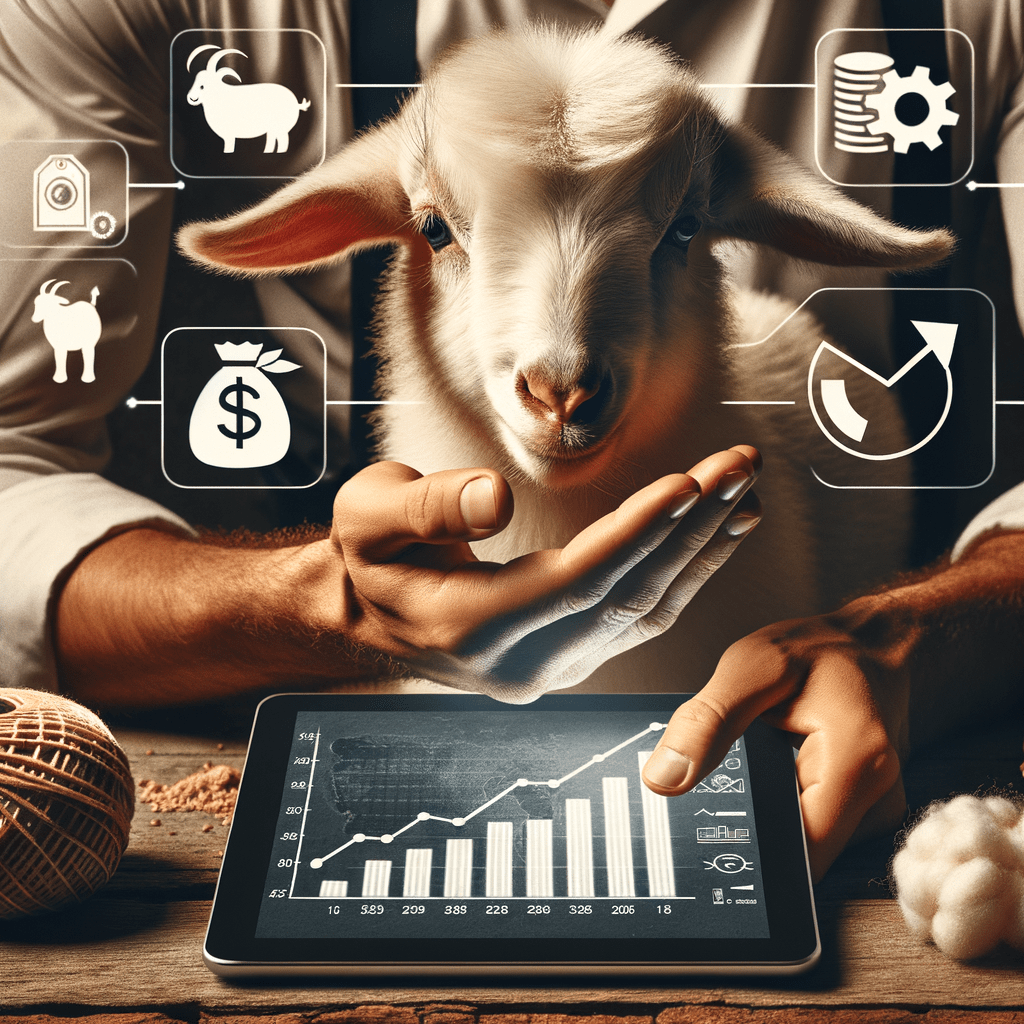Goat Farming Business Plan: Complete Startup Guide
Goat Farming Business Plan: Your Comprehensive Guide

By Perplexity
Introduction to Goat Farming
Understanding the Goat Farming Business Model
Before diving into the specifics of your goat farming business plan, it’s essential to understand the business model. Goat farming can be divided into several categories:
- Dairy Goat Farming: Raising goats for milk production.
- Meat Goat Farming: Breeding goats for meat, often focusing on breeds like Boer goats.
- Fiber Goat Farming: Raising goats like Angora and Cashmere for their fibers.
- Pet Goat Farming: Selling goats as pets or for companionship.
Each type has its own market, costs, and requirements. Understanding which segment you want to focus on will help shape your business plan.
Step-by-Step Guide to Creating a Goat Farming Business Plan
A solid business plan is crucial for your goat farming venture. Here’s a step-by-step breakdown:
- Executive Summary: Write a brief overview of your business, including your mission statement and goals.
- Market Research: Analyze your target market. Who are your customers? What do they want? Look at local competition.
- Business Structure: Decide on the structure of your farm. Will it be a sole proprietorship, partnership, or corporation?
- Operations Plan: Outline your daily operations. Discuss feeding, breeding, healthcare, and housing for your goats.
- Marketing Plan: Detail how you will reach potential customers and promote your goat products.
- Financial Plan: Include startup costs, revenue projections, and funding options.
Once you have gathered your market data, the next decision is how to compile it into a professional document, which involves comparing AI and manual planning methods to find the most efficient approach for your operation.
Financial Projections and Budgeting Tips
Understanding goat farming costs is critical for your business plan. Here are the key areas to consider:
- Startup Costs: This includes land, shelter, equipment, goats, feed, and veterinary care. Estimate these costs to determine your initial investment.
- Operating Costs: Monthly expenses such as feed, healthcare, utilities, and maintenance.
- Revenue Streams: List expected income from milk, meat, and other products.
Creating a detailed budget will help you manage your finances effectively. Consider using spreadsheets or budgeting software to track expenses and income. Clear and convincing financial projections are crucial not only for your own budgeting but also for securing loans or investments. Creating investor-ready plans that clearly communicate your profitability model and growth potential is often the key to unlocking the funding you need.

Marketing Strategies for Goat Products
Once you have your goats and products, it’s time to sell them. Here are some effective goat farm marketing strategies:
- Local Farmers Markets: Selling your products directly to consumers can build a loyal customer base.
- Social Media: Use platforms like Facebook and Instagram to showcase your goats and products. Share pictures, stories, and promotions.
- Online Sales: Consider setting up an online store. This can broaden your reach beyond your local area.
- Networking: Connect with local businesses, restaurants, and grocery stores. Establishing partnerships can help you sell your products more widely.
Effective marketing is essential for reaching your customers and ensuring your goat farming business thrives. Just as digital marketing expands your reach, leveraging tools that are AI revolutionizing business plans can give you a significant competitive edge by enabling you to quickly adapt your strategy based on market data and financial scenarios.
Common Challenges in Goat Farming and Solutions
Like any business, goat farming comes with its challenges. Here are some common issues and how to tackle them:
- Health Issues: Goats can suffer from various health problems. Regular veterinary check-ups and vaccinations can prevent many health issues.
- Market Fluctuations: Prices for goat products can vary. Diversifying your product offerings can help stabilize income.
- Predators: Goats may be vulnerable to predators. Building secure fencing and shelters can protect them.
- Regulatory Issues: Familiarize yourself with local laws regarding livestock farming to avoid fines.
By anticipating these challenges, you can create strategies to minimize their impact on your farm.
Regulatory Compliance and Best Practices
Before starting your goat farming business, it’s essential to understand the regulations you must follow. These can include:
- Animal Welfare Regulations: Ensure you’re providing proper care and living conditions for your goats.
- Health Regulations: Some areas may require health checks and vaccinations for your goats.
- Permits and Licenses: Check with local government authorities about any permits necessary for operating a farm.
Following these regulations will help you run a successful and compliant goat farming business.

Case Studies of Successful Goat Farms
Learning from others can inspire and inform your own goat farming journey. Here are a couple of success stories:
- Sunny Acres Goat Farm: Located in Ohio, this farm started with just a few goats. They focused on dairy production and now sell cheese and yogurt at local markets. Their success came from strong marketing and community engagement.
- Green Pastures Farm: A Texas-based operation that specializes in meat goats. They built a strong online presence and now ship products across the country. Their success is attributed to effective branding and a diverse product line.
These stories show that with hard work and a solid plan, your goat farming business can also succeed.
Conclusion and Next Steps
Starting a goat farming business can be a rewarding venture. By creating a detailed business plan, understanding your costs, developing effective marketing strategies, and preparing for challenges, you can set yourself up for success. Remember to stay informed about regulations and learn from the experiences of others in the industry.
Now that you understand the components of a successful goat farm, it’s time to take the next step. Draft your business plan with confidence, and consider using our AI Business Plan Generator to streamline the process and ensure you cover all essential aspects.
Now that you have a comprehensive overview, it’s time to take the next step. Whether it’s conducting more research, drafting your business plan, or visiting local farms, every step brings you closer to your goal of starting a goat farming business.
Happy farming!
